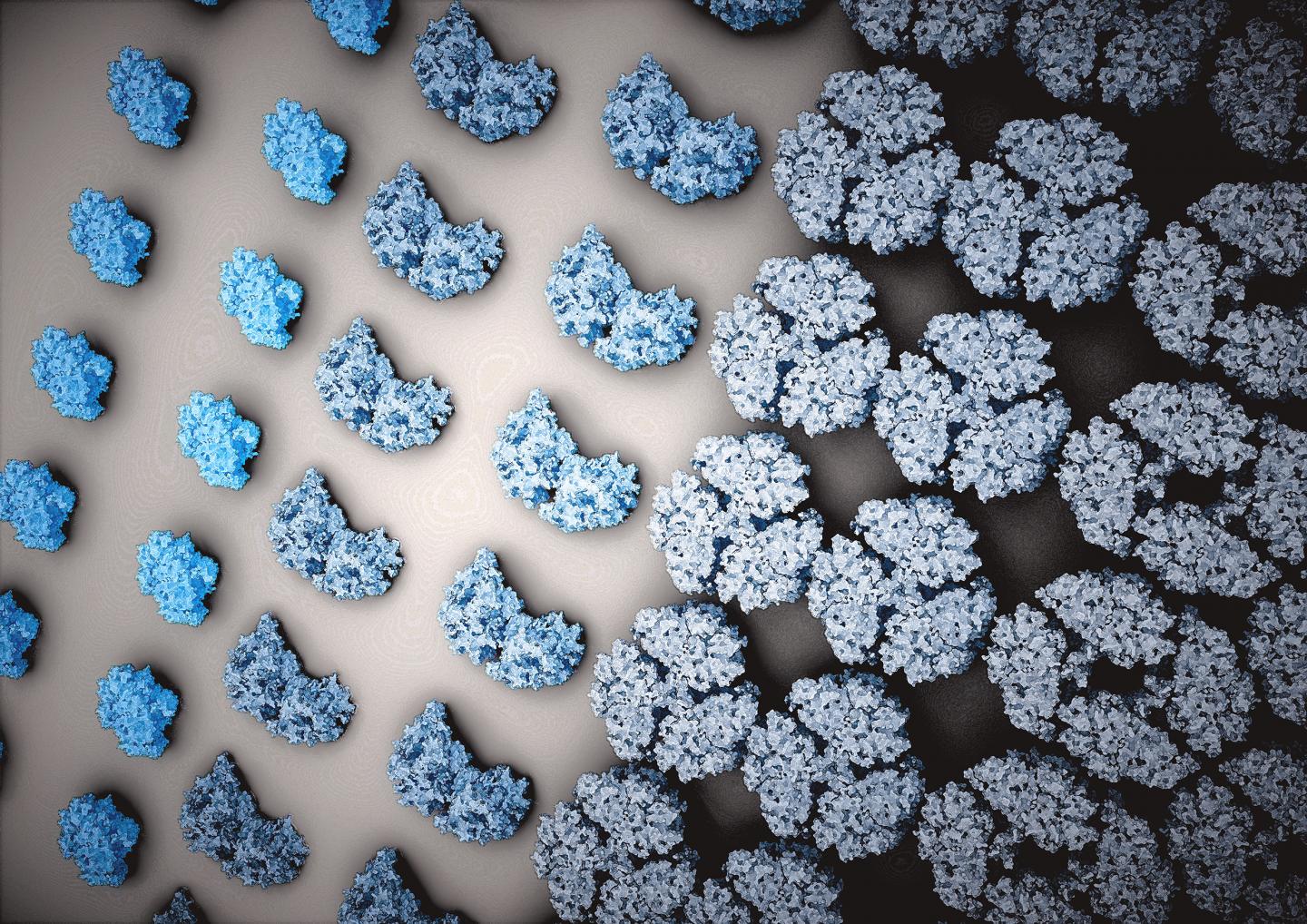
Credit: Ella Marushchenko
Oxygenic photosynthesis is the conversion of sunlight into chemical energy that underpins the survival of virtually all complex life forms. The energy conversion is driven by a photosynthetic apparatus that captures light photons in the bioenergetic membranes of cyanobacteria, algae and plants. Photosystem I is a central component of this process.
The current textbook paradigm of Photosystem I is a trimer architecture for cyanobacteria, and a monomer for algae. Two new discoveries from a collaboration of researchers from SciLifeLab with Tsinghua University and Tel Aviv University, reported in Nature Plants, find that freshwater-living plankton Anabaena has adapted a specialized Photosystem I dimer of dimers with 476 pigments; while green alga Dunaliella, has optimized a minimal form of Photosystem I (mini-PSI) to live in hypersaline environment and under light stress. Annemarie Perez Boerema from Alexey Amunts lab (Stockholm University, SciLifeLab) used cryo-EM to visualize the unusual forms of Photosystem I.
The first study on Photosystem I tetramer from Anabaena revealed an increased surface area allowing enrichment of Photosystems in the bioenergetic membrane. This provides an advantage during maturation stages requiring nitrogenase activity. The second study revealed mini-PSI from Dunaliella that features the smallest complex of its kind identified up to date. The scientists also report new energy pathways, pigment binding sites and phospholipids. Unlike all the other known counterparts, the mini-PSI lacks the core protein components that would be involved in interactions with additional light-harvesting partners. This observation suggests previously unknown regulatory mechanism reducing the association of peripheral antennae for environmental acclimatisation.
Together, the two studies show that Photosystems can photosynthesise beyond the textbook description. The discovered configurations in diverged species can be considered as an evolutionary prank that nature makes on occasion, which is promising news for researchers exploring fundamental questions in bioenergetics.
###
Paper on Photosystem I from Anabaena
Paper on Photosystem I from Dunaliella
Amunts’ lab webpage
Media Contact
Vasileios Kyriakidis
[email protected]
Related Journal Article
http://dx.





